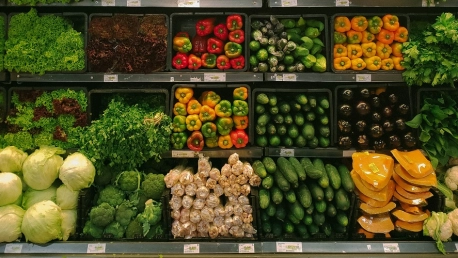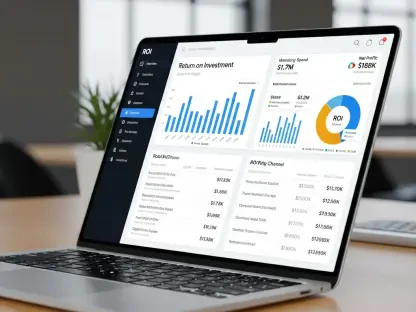Sustainable change in food value chains has become essential to political, scientific, and economic discourse. In the US alone, about 108 billion pounds of food is wasted each year, according to the non-profit organization Feeding America. That represents approximately 130 billion meals and more than $408 billion in food waste each year.
Reducing food waste provides several benefits to people and the planet. It improves food security, counteracts environmental issues, saves money, and reduces pressure on land, water, biodiversity, and waste management systems.
This article aims to explain the effects food waste has on the environment, people, and the economy, identify the main causes of food waste in the retail sector, and propose efficient solutions that retailers can use to overcome this issue.
Food Waste Explained
According to The United Nations Food and Agriculture Organization (FAO), food waste is the “decrease in the quantity or quality of food resulting from decisions and actions by retailers, food service providers and consumers.” It represents a major global environmental issue, accounting for about 10% of annual CO2 emissions and a significant contributor to numerous social and economic concerns.
Waste occurs at every stage of food production and distribution—from farmers to packers and shippers, manufacturers and retailers to households. Preventing and reducing food waste should be a priority for every stakeholder to diminish the associated environmental, economic, and social burdens. Because of their position at the core of the food supply chain, retailers play a significant role in implementing food waste reduction measures, as they can influence both upstream suppliers and downstream consumers.
The Multifaceted Negative Effects of Food Waste
Social Impact
Food waste is a major social and moral concern. According to the World Food Programme (WFP), more than 45 million people worldwide suffer from hunger and are at risk of malnutrition, starvation, and death. While hunger is the feeling someone has when they have not eaten anything, food insecurity is defined as the constant lack of food to live a healthy life due to economic conditions. According to the US Department of Agriculture (USDA), more than 34 million people, including 9 million children, in the US experience food insecurity.
Food waste has negative impacts and exacerbates both of these cases. Food security—the physical, social and economic access to sufficient, safe, and nutritious food—is a critical global issue that needs to be addressed. In particular, the world’s growing population will require significantly increased food production, and there are no additional resources on the planet to produce it. Preventing food waste is essential to overcoming this future challenge.
Economic Impact
Reducing food waste would result in significant economic benefits, such as lower disposal and labor costs, reduced overhead expenses, and tax benefits from food donations. In developed countries, for example, food waste affects pricing policies, leaving low-income people who cannot afford to spend more money on food most vulnerable. Food pricing is also primarily influenced by environmental changes.
Environmental Impact
Food waste is not just a social or economic problem—it also has a significant impact on the environment. Wasted food represents a loss of all the energy and resources spent growing, harvesting, transporting, and packaging the food.
Main Causes of Food Waste in the Retail Sector
Identifying the causes of food waste in the retail sector is critical to developing effective measures to reduce or avoid it. Here are some of the most common causes of food waste occurring at retail outlets:
Overstocking
Consumers generally want shelves to be constantly stocked with products and have plenty of options. This leads retailers to prefer stocking too many products rather than risking shortages, while the latter almost always pick the most recent products. This creates food waste, as food is thrown away when it has passed its expiration date.
Poor Demand Forecasting
Some causes of retail food waste are difficult to control, such as an unexpected increase or decrease in demand. Store managers often need help accurately forecasting and controlling the demand for a specific product within a period, which is especially an issue when it comes to food products with short shelf life and low inventory turnover rates.
Expired Shelf-Life
Many products are perishable and have a limited shelf-life; overstocking is certainly not helpful in this regard. Improper storage and product packaging also contribute to products past their expiration date still being on sale.
Defects or Damage to the Food Item or Packaging
Inadequate packaging has also been identified as a cause of food waste. These include damage during transportation, improper handling, and consumers’ confusion regarding the information on the label.
Effective Strategies for Retailers to Reduce Food Waste
The best approach to avoiding food waste is to prevent it from happening in the first place. In retail, waste can be reduced or eliminated by carefully planning supply and demand, re-evaluating sourcing practices, and improving storage conditions, marketing, and labeling practices. When surplus food is unavoidable, it can be donated to hunger relief organizations, so that they can feed people in need. Inedible food can be recycled into other products, such as new ingredients, animal feed, compost, bioenergy, bioplastics, and textiles.
Below you will find some of the best practices that can help retailers reduce food waste.
Carefully Plan Supply and Demand
Retailers and farmers can partner and work together to reduce food waste, thus minimizing uncertainty and better balancing supply and demand after harvest. Working with producers to better match supply and demand requires more communication and transparency between stakeholders—and retailers and farmers must do their part. Retailers need to give suppliers more information about expected demand, while farmers need to provide retailers with more insight into their production plans.
Re-evaluate Sourcing Practices
Retailers should select suppliers based on more than just cost. Efforts to reduce food waste should be considered when developing contracts, creating incentive structures, and setting performance targets. Viewing food as a commodity and focusing on short-term costs should be replaced with purposeful retailer-supplier collaboration.
Redistribute or Upcycle Food That Would Otherwise Be Wasted
Enormous amounts of food that are thrown away each year is still edible. Businesses, charities, and individuals can benefit from redistributing surplus food to those who need it. When redistribution isn’t an option, upcycling food or certain ingredients is the next best solution. Upcycling is a fundamental concept that aligns with the Sustainable Development Goals (SDGs) and can be defined as the reuse of discarded materials to create a product of higher quality or value than the original.
Retailers can create new revenue streams by allocating research and development resources to upcycle non-marketable food and ingredients. In fact, large quantities of food that would otherwise go to waste can even be turned into new products. According to a McKinsey report, reducing food waste can prove extremely beneficial for businesses: retailers could reduce their cost of goods sold (COGS) by 3% to 6%. Grocers and manufacturers could unlock $80 billion in new market potential by developing new businesses from food that would otherwise be wasted. And they could also reduce CO2 emissions and associated costs by 4% to 9%.
For instance, a Denver-based company, The Real Dil, used the cucumber-infused water it created as part of the pickling process and turned it into a Bloody Mary mix. Now the company is reportedly better known for the mix than its pickles, and the product has helped it reach its goal of zero waste. Another great example is San Francisco startup Planetarians, which uses brewers’ yeast and soybean meal to make whole cuts that can be immediately processed (portioned, seasoned, cooked, packaged) or frozen for 365 days. Using by-products, the company has dramatically reduced costs and made the process zero waste.
Improve Organizational Management
Proper food waste management and assessment can help prevent food waste. A standardized procedure can also increase food waste awareness among staff to prevent it from occurring. The better managers and employees are trained on this matter, and the better workflows can be optimized.
Ensure Timely Sale
When a product is nearing its best-before date, or there’s a surplus of that product, retailers can adjust the price to increase sales and prevent waste. An efficient solution to ensure timely sales is dynamic discounts for products close to their expiration date, which have been proven to increase sales, reduce waste, and maximize profits.
The Bottom Line
Food waste is a growing problem across multiple economic sectors. Reducing food waste would provide various environmental, social, and economic benefits by counteracting environmental issues, improving food security, and saving money. Due to their position at the core of the food supply chain, retailers play an especially significant role in implementing food waste reduction measures. Retailers can minimize waste by carefully planning supply and demand, re-evaluating sourcing practices, upcycling food, improving organizational management, and ensuring timely sales.









